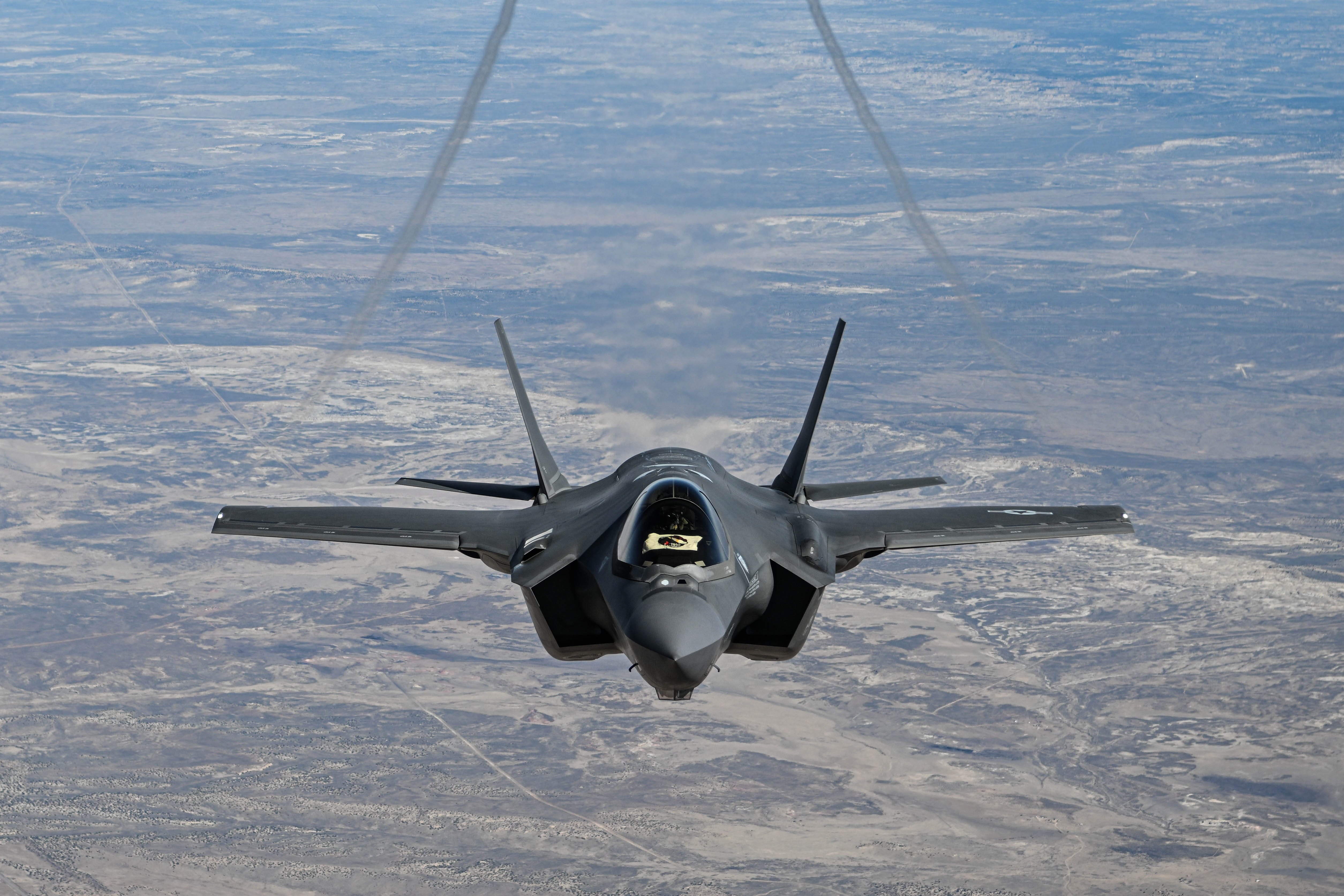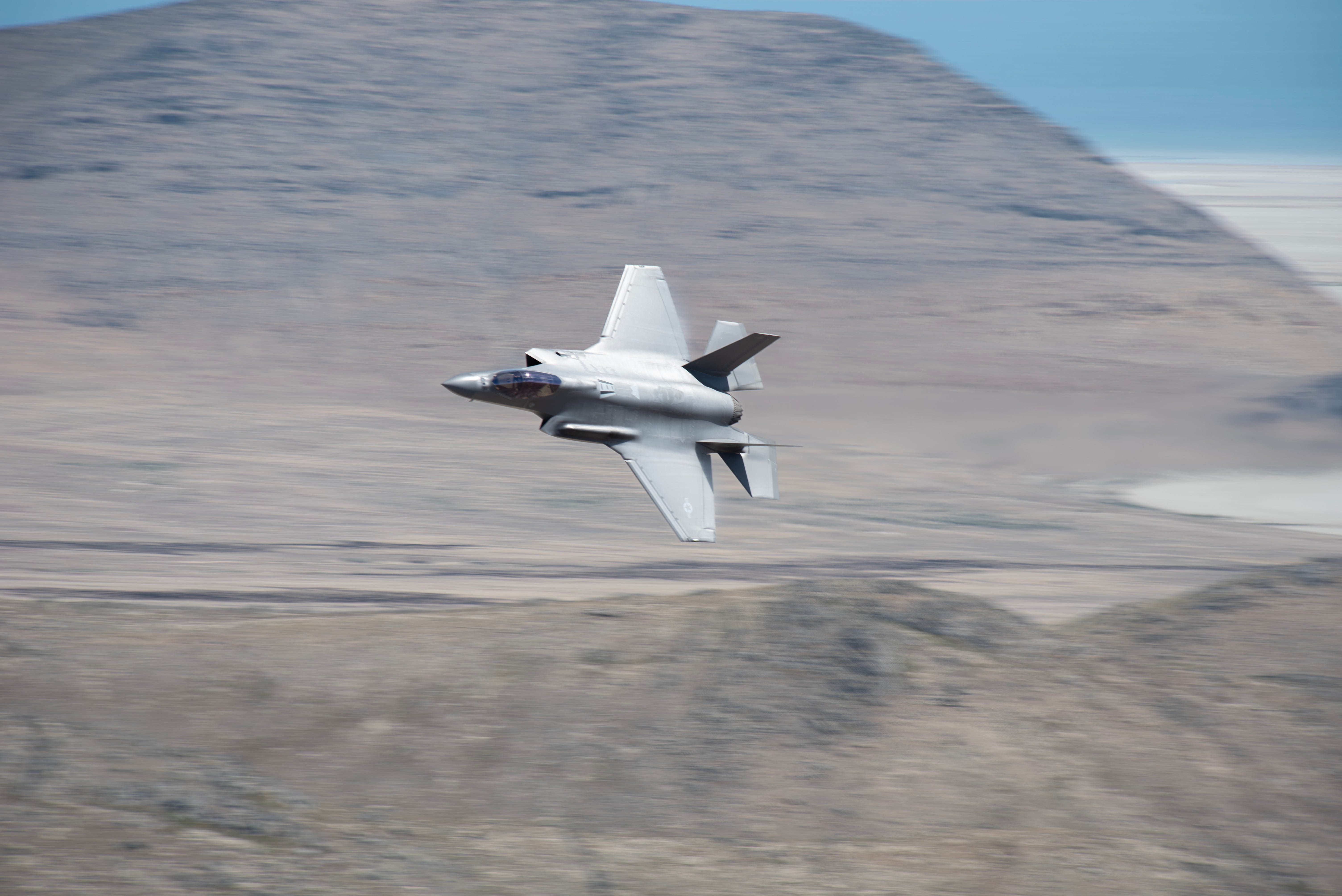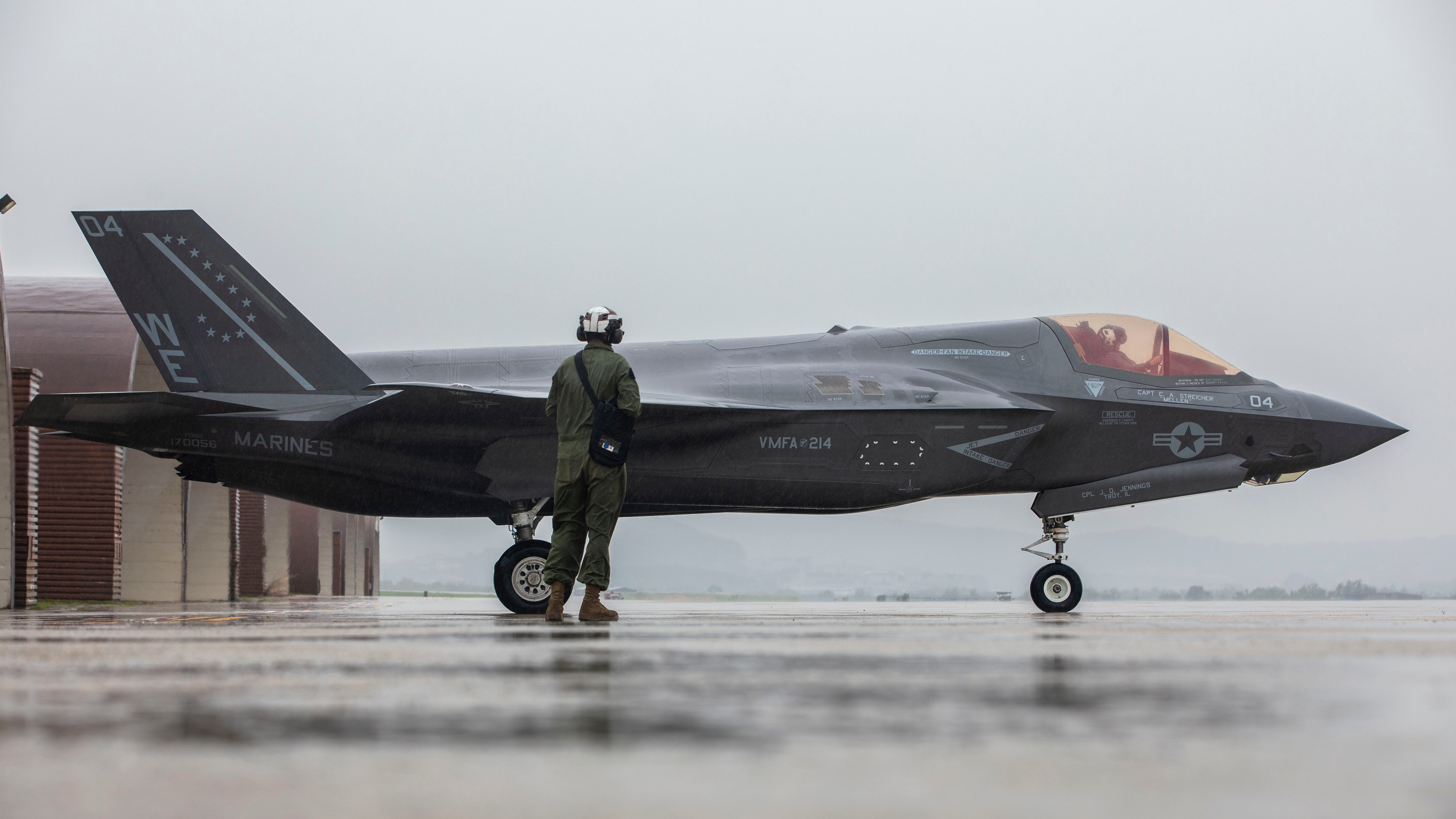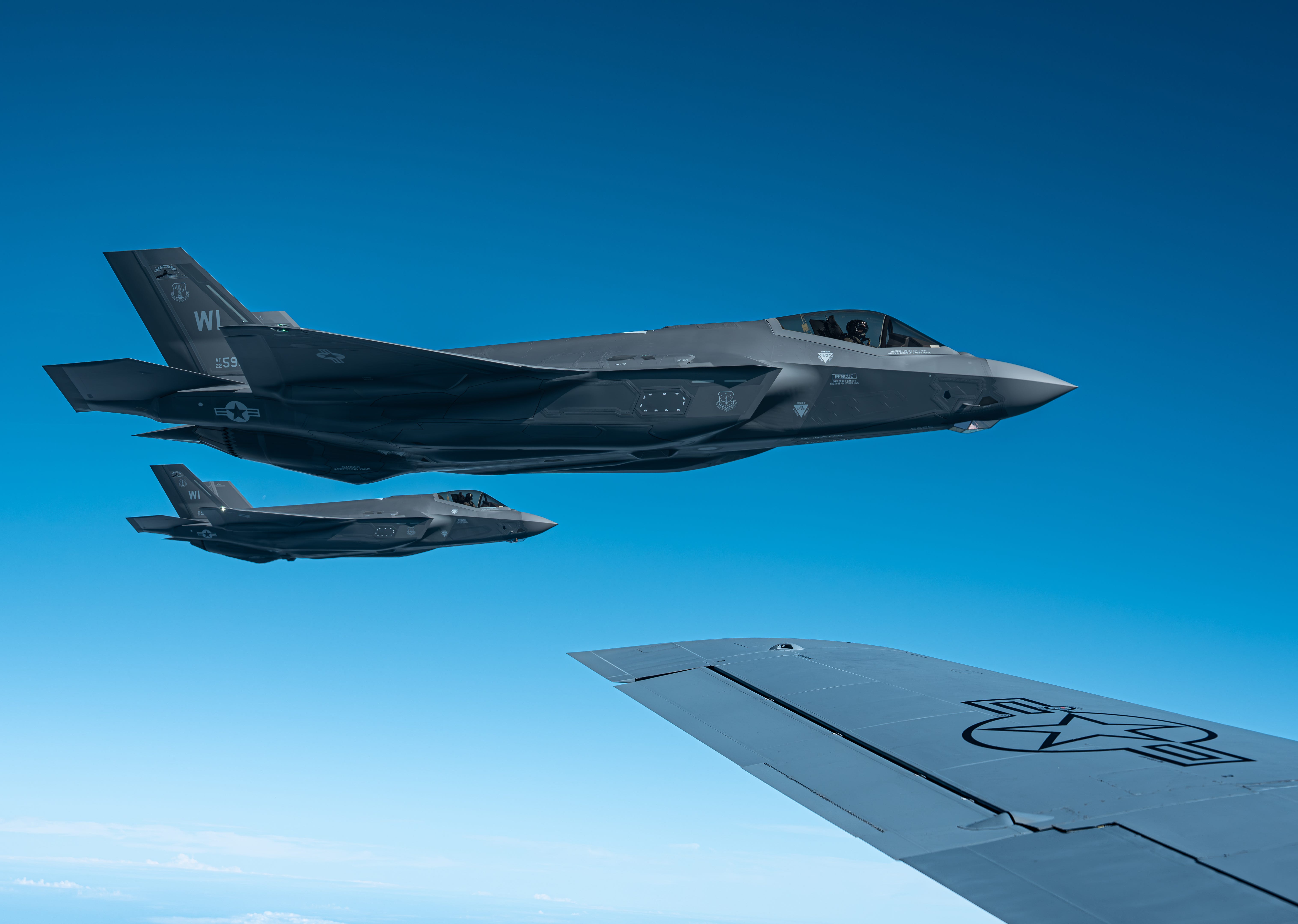
US Air Force photo by Capt. Nathan Poblete
What does it mean for a jet to be a “stealth fighter?” It means it’s hard to detect and tough to strike, but it doesn’t mean the jet is invisible or invulnerable.
The Lockheed Martin F-35 Lightning II Joint Strike Fighter, a top US stealth fighter, has been flying combat missions against the Iran-backed Houthi rebels in Yemen. During an intense two-month bombing campaign, both US Air Force F-35As and Navy F-35Cs were in the Middle East.
This week, multiple news reports citing anonymous US officials indicated an F-35 took evasive action during Operation Rough Rider to avoid being struck by a Houthi surface-to-air missile.
It’s unclear if the F-35 was the target or to what extent the fighter was at risk. Neither the Pentagon nor US Central Command, which oversees Middle East operations, has responded to Business Insider’s queries on this incident.
The incident is notable because the F-35, a fifth-generation fighter jet with advanced stealth capabilities built by US defense contractor Lockheed Martin, was made to pierce contested airspace defended by sophisticated air defenses and advanced enemy aircraft and suppress enemy capabilities or feed targeting data to other assets. Last year, Israeli F-35s demonstrated the fighter jet’s ability to fulfill this role by striking inside Iran. Though capable, Houthi air defenses fall short of the kind of threats the jet was made to confront.
What, exactly, this means for the jet, if anything, is unclear considering the unknowns in this story. But there are aspects of the F-35 and stealth aircraft in general that are worth keeping in mind when thinking about these reports.

US Air National Guard photo by Master Sgt. Danny Whitlock
Thinking about stealth aircraft
Billie Flynn, a former Royal Canadian Air Force combat commander and Lockheed employee who was involved with the F-35 program for around 20 years, said that one aspect of stealth, the part most commonly looked at, is an aircraft’s radar cross-section — something the size of a ping pong ball or a golf ball or smaller for a fighter aircraft like the F-35.
“We can imagine how impossible that would be to detect high up in the air, many, many miles away,” Flynn told BI.
The F-35 — along with the F-22 Raptor, the B-2 Spirit bomber, and its eventual successor, the B-21 Raider — are defined as “very low observable” aircraft, and that capability comes from a combination of factors.
The F-35 was designed with stealth in mind. According to Lockheed, the signature gray paint the jet is coated in at the end of the production line is intended to reduce and absorb radar signals. The aircraft’s design also contributes to its low observability by eliminating flat surfaces and right angles, using composite materials, and allowing for the storage of weapons and fuel internally. The engine design also limits emissions.
Those passive capabilities enhance the F-35’s stealth, but it also features active systems like an advanced electronic warfare suite that can jam or inhibit enemy radars to prevent detection.
President Donald Trump, who said this week he’s not a big believer in stealth, said repeatedly during his first term that the F-35 is “invisible.” It is not. These aren’t cloaked Klingon warbirds from Star Trek, but they are tough to detect and difficult to hit. But no system is infallible.
The US learned this lesson during the Kosovo War in the late 1990s, when the Yugoslav Army shot down a Lockheed F-117 Nighthawk, marking the loss of one of America’s first operational stealth planes.

US Marine Corps photo by Cpl. Chloe Johnson
Nothing is invincible
“Everything is spotable. The idea that you’ve got a cloaking device is very dangerous,” said Richard Aboulafia, an aviation expert and the managing director of the US consulting firm AeroDynamic Advisory.
“The most important asset of the F-35 is not its low observability,” Aboulafia told BI, “it is its extremely advanced mission equipment package that allows it to spot dangers and targets, threats and targets.” He said that’s the real capability.
Aboulafia said that being a low-observable aircraft means that there is less of a risk of being spotted and tracked, not that the plane is entirely stealthy all of the time.
The way a jet is employed, such as if munitions are carried externally in what has been described for F-35s as “beast mode,” can compromise stealth. Adversary air defenses can turn on their system at the right place at the right time and get lucky as well.
In the case of the recent media reports, the US F-35 avoided the Houthi missile. But it’s unclear whether the jet was actually targeted or if the rebels just fired in that general direction and happened to get somewhat close to the aircraft, forcing evasive maneuvers.
Houthi air defenses are “a significant threat to military and civilian aircraft and platforms operating in the vicinity of Yemen,” Gordon Davis, a retired US Army major general and NATO’s former deputy assistant secretary-general for its Defense Investment Division, told BI.

US Air National Guard photo by Master Sgt. George Perkins
Davis, now a non-resident senior fellow with the Center for European Policy Analysis’ Transatlantic Defense and Security Program, said that the rebels have the “most capable and sophisticated” air defense array of any non-state actor in the Middle East, thanks to Iranian training, equipping, and assistance.
Houthi air defenses include surface-to-air missile systems of varying ranges, and these have reportedly shot down a number of US military MQ-9 Reaper drones, though not any crewed aircraft.
Davis said that although it is theoretically possible that a Houthi air defense system could have locked onto an F-35 and fired at the aircraft, it’s “highly improbable” that a properly operating jet would be struck. That’s because the jet is equipped with advanced electronic warfare and self-protection capabilities, like its AN/ASQ-239 system, that can detect and defeat threats. Also, the pilot would appropriately maneuver in response.
“An F-35 would’ve had to go to great lengths to expose itself enough that any system — whether it be Houthi, or Russian, or Chinese — could actually see it in the air,” explained Flynn, the former Canadian commander. “That’s almost inconceivable to me.”
The post The F-35’s advanced stealth doesn’t make it invisible, just hard to kill appeared first on Business Insider.




